Are you looking for a specific topic? Use the search function at the top right.
Sind Sie auf der Suche nach einem bestimmten Thema? Nutzen Sie die Suchfunktion oben rechts.
Wenn Sie unser Magazin kostenfrei abonnieren möchten, schicken Sie eine Mail mit dem Betreff FELD und Ihren Kontaktdaten an: feld@zalf.de.
Sie möchten die neuen FELD-Ausgaben lieber online nachlesen?
Dann registrieren Sie sich für den Newsletter auf unserem Online-Blog zum Magazin: www.quer-feld-ein.blog
FELD 02/2020
- Text
- Green spaces
- Biodiversity
- Insects
- Emissions
- Wolf
- Ecosystems
- Urban
- Soil fertility
- Landscape
- Wildlife
- Soils
- Researchers
- Zalf
- Carbon
- Residues
- Crop
- Agricultural
- Soil
Soil Soil Prof. Dr.
Soil Soil Prof. Dr. Michael Sommer (left) is head of Research Area 1 “Landscape Functioning” at ZALF as well as the Working Group “Landscape Pedology”, in which Dr. Martin Leue (right) is also a researcher. In the middle, six cores are shown, which illustrate the variety of soils on a single field with soil erosion. convinced that these soils have great storage potential. Even soils that have not been eroded can still bind additional carbon. This potential could be exploited using a system of soil cultivation that was developed in the 1960s and is almost forgotten today. “Fractional deep tillage” is the name of the method which, instead of plowing only 25 cm deep, as is usually the case, involves plowing 50-centimeter-deep and 10-centimeterwide stripes at 70 centimeter intervals. Fertile topsoil is thus brought into the subsoil, which significantly promotes plant growth. At the same time, low-carbon subsoil is mixed into the topsoil, allowing it to bind new carbon. “After five to ten years, the humus content of the topsoil is back to the level it was before the fractional deep tillage”, explains Michael Sommer. “The carbon stocks in the soils thus increase overall – and that is good for the climate and for soil fertility.” The Federal Ministry of Food and Agriculture (BMEL) is extremely interested in the method and is financing a project on the subject at ZALF until 2022. In the next step, the researchers are bridging the gap to Agriculture 4.0 and combining the data obtained with information from modern, drone and satellite-based remote sensing. The result is spatially high-resolution, three-dimensional soil information. They show where there are particularly fertile or heavily eroded areas in the field in detail. Using mathematical models, the researchers also want to create a three-dimensional digital image of the arable soils in the future in order to be able to exploit the carbon storage potential even more effectively and further increase soil fertility in a targeted manner. “This type of soil landscape modelling is the future, and we are just beginning to enter this uncharted territory”, Sommer explains enthusiastically. However, digitalization alone is not enough: At the same time, the researchers’ expert knowledge of pedology needs to be linked with the comprehensive experience of local agricultural practice. Many a farmer is astonished at first glance by the colorful pictures of his fields. Many years of experience, for example about “problem areas” in the field, are quickly confirmed, which can be supported by the soil information. “This builds trust, also for us to then be able to test innovations together, such as deep tillage and other adaptation strategies”, says Sommer, looking to the future. THE EARTH’S THREE-DIMENSIONAL SKIN Now it is all about identifying the exact location and storage potential of such soils as quickly and efficiently as possible. How much carbon a soil can actually absorb depends on many factors. Iron oxides and clay minerals are of particular importance here. The researchers indirectly determine these with the helpof special soil sensor technology optimized at ZALF, which includes optical methods as well as infrared and X-ray fluorescence spectroscopy. “We only need 30 minutes to measure a core, which is incredibly fast”, says Martin Leue. “This enables us to analyze many cores relatively cheaply in a short period of time, and we can also examine larger sections of landscape at high resolution.” 32 33
- Seite 1 und 2: FELD MAGAZINE OF THE LEIBNIZ CENTRE
- Seite 4: TITLE STORY THE CONFLICT MANAGERS 9
- Seite 8: wildlife management wildlife manage
- Seite 12: USING CROP RESIDUES MORE EFFICIENTL
- Seite 16: crop residues crop residues Optimiz
- Seite 20: Insect protection Insect protection
- Seite 24: Ecosystems Ecosystems When Gabriela
- Seite 28: ecosystems ecosystems It is importa
- Seite 32: Soil A PAINTING FROM ABOVE AND BELO
- Seite 38: Mission of the Leibniz Centre for A
Unangemessen
Laden...
Magazin per E-Mail verschicken
Laden...
Einbetten
Laden...
FELD (dt.)
Neu im querFELDein-Podcast
Would you prefer to read the new FELD issues online?
Then register for the newsletter on our online blog: www.quer-feld-ein.blog

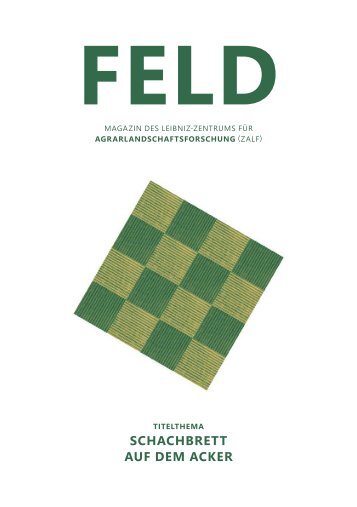
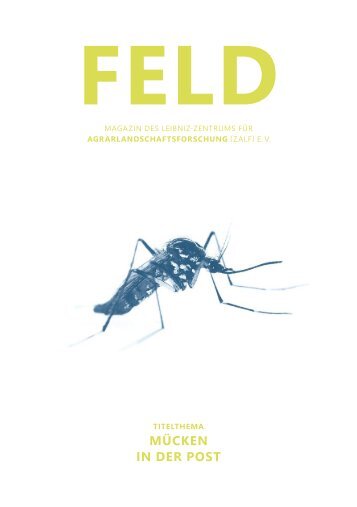

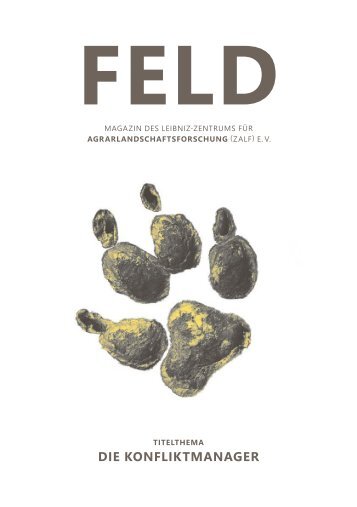
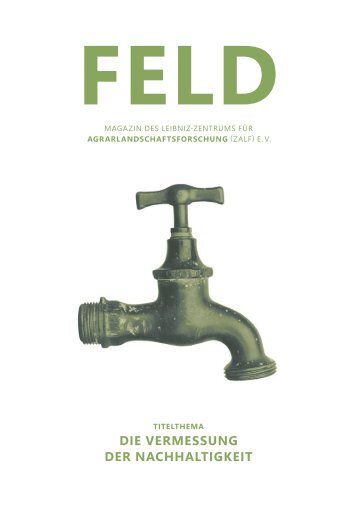
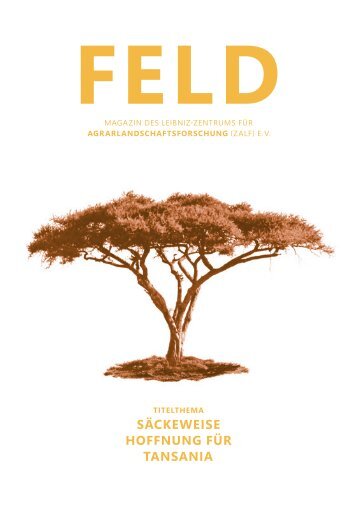
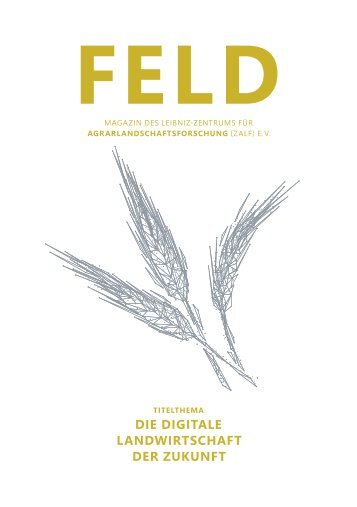
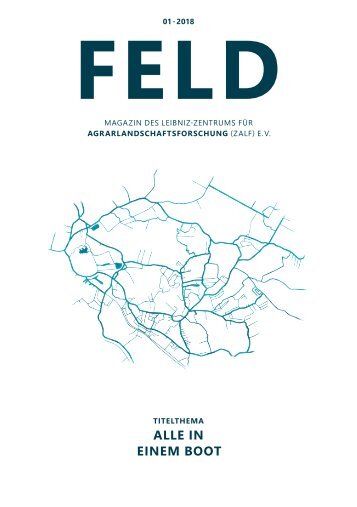
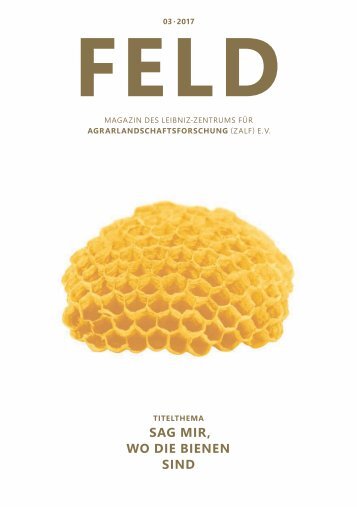
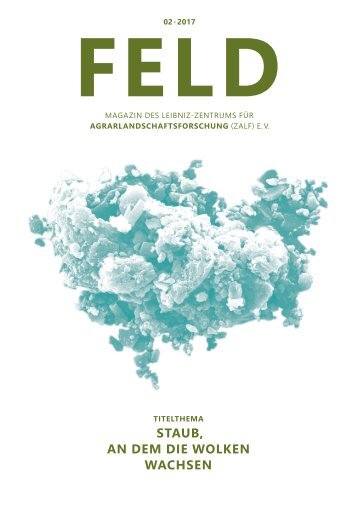

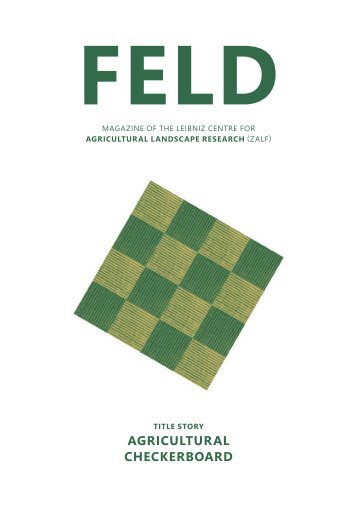

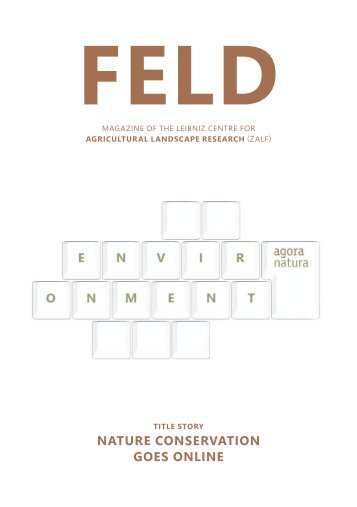








FOLLOW US
Twitter
Youtube
Instagram
LinkedIn